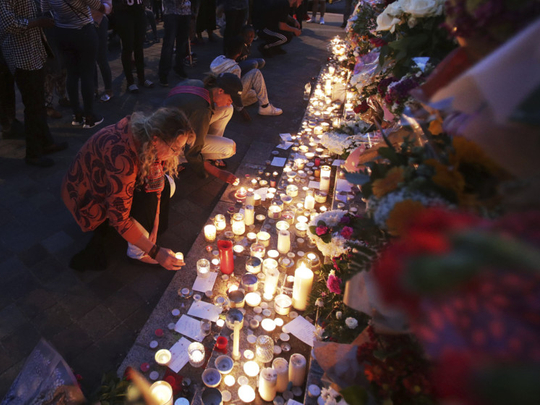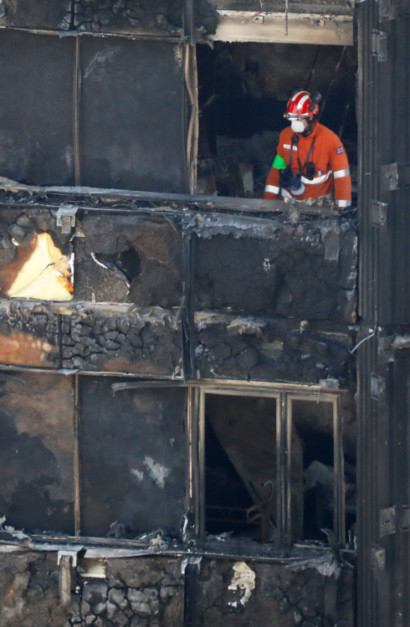
London: Flame-retardant cladding could have been fitted to Grenfell Tower in London for just an extra £5,000 (Dh23,450), it emerged Saturday, as Kensington and Chelsea council was accused of carrying out a cut-price regeneration project.
It also emerged that the manufacturer of the panels used to clad the tower block where at least 58 people died in the fire last week advised customers against using its polyethylene-cored tiles in high-rise buildings. Diagrams in a brochure dated 2016 for Reynobond tiles show how polyethylene (PE) core tiles are suitable only for buildings of up to 10 metres in height. “As soon as the building is higher than the firefighters’ ladders, it has to be conceived with an incombustible material,” the brochure says.
There are also questions about why the tower block was not fitted with sprinklers or a central smoke alarm.
The contract to improve insulation and replace heating and water systems at Grenfell Tower was supposed to be carried out by the building firm Leadbitter, but the contractor said it could not do the work for less than £11.27 million, £1.6 million more than the council’s budget. The Kensington and Chelsea Tenant Management Organisation, which maintained the council’s housing stock, put the contract back out to tender and building firm Rydon said it could do the work for £8.7 million.
But throughout the regeneration work, residents at Grenfell complained about slapdash workmanship, posting images of exposed pipes laid across residents’ carpets and voicing concerns that boilers had been fitted in the middle of hallways, near fuse boxes. Relations with Rydon broke down so completely that Grenfell residents pinned posters to their doors warning wo rkmen not to enter their homes.
Another company, Omnis Exteriors, said it had been asked to supply cheaper cladding to installer Harley Facades which did not meet strict fire-retardant specifications.
The safer sheets were just £2 a square metre more expensive, meaning that for an extra £5,000 the building could have been encased in a material that may have resisted the fire for much longer.
The cut-price version is banned from use in the United States and Germany for tall buildings. David Lammy, the MP for Tottenham, whose friend Khadija Saye died in the blaze, said: “You can’t contract out everything to the private sector. The private sector do some wonderful things, but they have for-profit motives; they cut corners. We’ve all been up those tower blocks — they exist right across the country. Where are the fire extinguishers on every corridor? Where are the hoses? Are the fire doors really working? Where are the sprinklers?”
The questions came amid growing fears over how many other tower blocks in London have been fitted with the same cladding as in Grenfell Tower. According to city council records, dozens of tower blocks appear to have been fitted with cladding similar to that used at the Kensington tower, and fire expert Sam Webb told agencies that any similar cladding should be immediately “torn down”.
Sadiq Khan, the mayor of London, said tower block residents across the city were “terrified the same thing could happen to them” and that checks on other tower blocks “need to be conducted as soon as possible”.
Fire safety experts said polyethylene is generally avoided in tall buildings. In a note on insulation materials, architectural consultants Probyn Miers observed: “Polyethylene is a thermoplastic material, which ... melts and drips as it burns, spreading the fire downwards as well as upwards.”
Witnesses to the Grenfell blaze said the flames spread quickly up the building. The London Fire Brigade has yet to say what the cause of the fire was.
— The Telegraph Group Limited, London 2017,
with inputs from agencies, BBC













